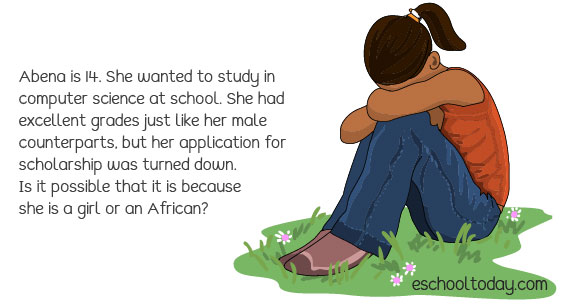- Discrimination and Prejudice
What is discrimination?
To discriminate is to treat others unfairly because of their association with or perceived connection to a group. Acts of discrimination take many different forms. For example, a tourist asked to pay a higher price for a place to stay because the landlord thinks he has a lot of money, whiles the locals pay a lower rate for the same facility.
Unknowingly many of us have treated others unfairly. In the same way, many of us have also been victims of unfair treatment.
Sometimes, there could be a reasonable explanation for a perceived discrimination act, and unlike physical abuse or rape, there may be no evidence of the act, and it may be difficult to prove that there has been a discrimination incident.

Exclusion and rejection are key ingredients of discrimination. They occur when people do not appreciate diversity or differences. They occur when people are prejudiced or have formed their own opinion about others because of their social, political, religious, sexuality, interests, culture, traditions, and so on.
In the past, nations have also treated their citizens and other nations unfairly. For example, some jobs (Example: kindergarten teaching) were done by women because they are thought to be more nurturing. That is a stereotype. In many countries, professions such as driving, army, police, and construction workers were all considered male jobs and women had a hard time getting into them.
DID YOU KNOW...
Discrimination can be very basic — such as you are not invited to a party because you live in a ‘poor’ neighborhood, or you are not on the school basketball team because you do not speak English very well. This kind occurs all around us, and they hurt many people.
